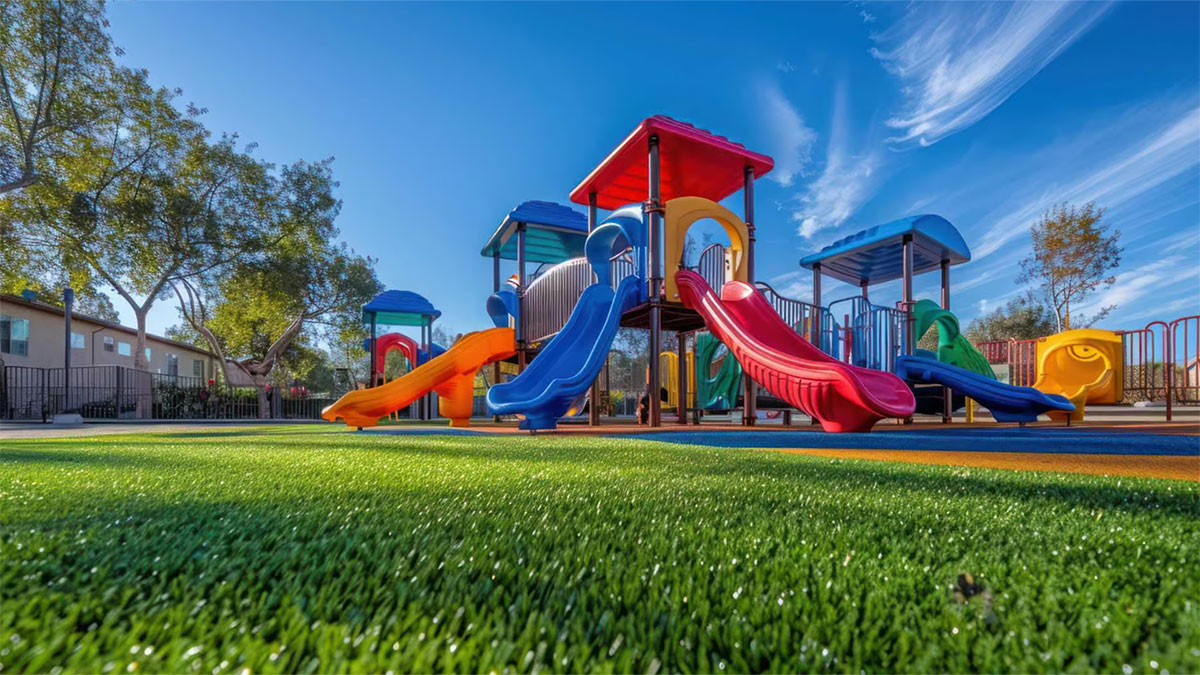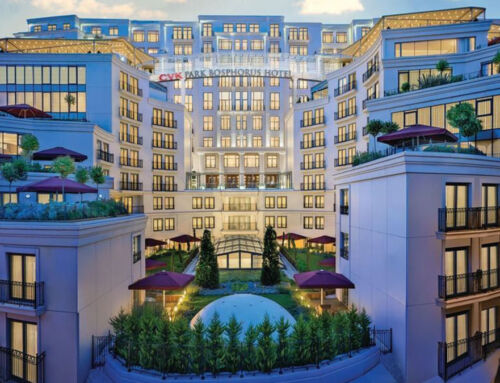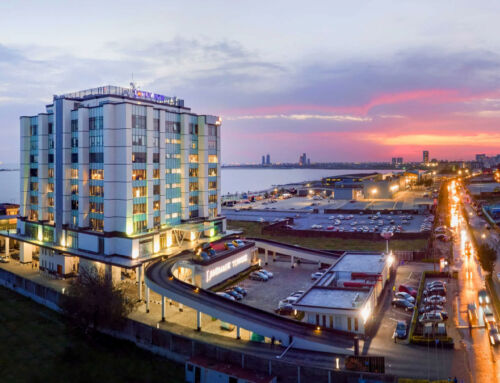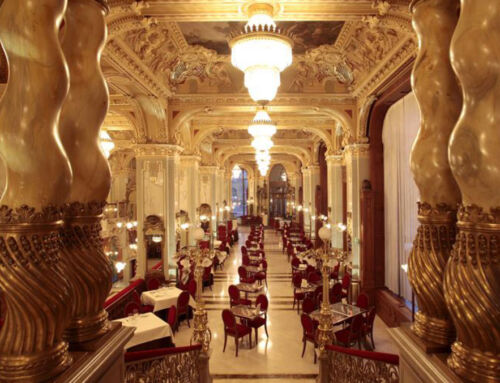Artificial turf on elastic bases made from recycled rubber or specialised cushioning systems, achieves impact absorption levels that comply with child safety regulations. The height and density of the synthetic fibres that make up the turf play a crucial role in its ability to cushion falls.
From a hygiene point of view, current models incorporate antibacterial technologies in the fibres and efficient drainage systems that prevent water accumulation. However, they require a maintenance protocol that includes periodic brushing to maintain the verticality of the fibres, as well as annual redistribution of the infill material.
Climatic and environmental considerations
The thermal behaviour of the material remains its main limitation. Measurement studies under direct solar radiation have recorded surface temperatures up to 20°C higher than those of natural grass, which has led many municipalities to establish protocols for use during hours of lower sunlight. On the other hand, its performance in rainy climates is significantly better than that of earthen surfaces, as it eliminates mud problems and maintains its functionality immediately after rainfall.
In terms of sustainability, although it eliminates the water consumption of natural grass, it presents challenges in its end-of-life cycle. Recycling systems for artificial turf are still under development, so it is currently more sustainable to opt for models made from recycled materials and with durability guarantees of more than 8 years.
Technical comparison with other surfaces
Compared to continuous rubber flooring—considered the gold standard in child safety—artificial turf has slightly lower impact absorption, although it is more uniform than rubber tiles. Its competitive advantage lies in its integration into the landscape; it allows for designs that simulate natural spaces. For areas with swings or tall structures, experts recommend combining it with rubber areas at critical fall points.
Recent technological advances have introduced substantial improvements in the latest generation of models. These include the availability of UV-protected fibres to reduce heating, softer textures and more natural colours.
By Pablo Vidal, senior architect in the Architecture Department at Amusement Logic.






